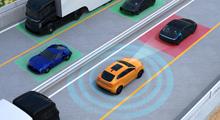Autonomous cars and the ethical question

Autonomous cars and the ethical question
An autonomous car is a vehicle that is capable of sensing its environment and navigating without human input. In recent times numerous major companies and research organizations have developed working prototypes of autonomous vehicles. This development is not just a technical challenge it also evokes a number of ethical questions such as: How shall the board computer be programmed in case of different accident scenarios? This raises the question of the alternative damage. Thus a weighing of possible variations of damages, which may occur through the accident. The board computer has to decide within a split of seconds which alternative to choose.
Of course the programming of a board computer is based on human criteria. And therefore a human being has to program the computer, which alternative to take in case of damage. These ethical questions increase debates all over the world. In Germany for example the well-known constitutional judge Udo di Fabio was instructed with the foundation of a committee responsible for these questions.
In the course of our newsletter we would like to invite our readers to participate on the discussion of programming the board computer of an autonomous car in an ethical correct manner. Therefore, we provide you with following principles and practical examples for discussion. We are looking forward to feedback of every single reader on our stated principles.
1. Human integrity goes beyond the costs of material:
A car is driving on the highway. Another oncoming car strays out of the central lane. To avoid a collision, the board computer drives the car on the side of the road. The manoeuvre results in significant damage of the evasive car. The risk of a personal injury was minimized. (right/wrong)
2. Animals get injured to avoid a material danger:
The car is driving on the highway. A dog jumps on the road unexpectedly. The car could be steered on the right side of the lane. Thereby the car would get slightly damaged by the crash barriers. The car keeps in the lane and collides with the dog. (right/wrong)
3. The life of the driver goes beyond the life of the pedestrian:
The car is driving on the highway. A pedestrian is entering the lane behind a not observable curve. An evasive swerve by the car would cause a serious accident, which may lead to fatal injuries or death of the driver. Hence, the car keeps in the lane and collides with the pedestrian. (right/wrong)
4. The injury of one person is condoned in case of prevention of the injury of several persons:
The car is driving on the highway. A group of children is driving on its bicycles on the oncoming lane. A pedestrian is entering the street unexpectedly. A collision may only be prevented by an evasive swerve to the oncoming lane. This driving manoeuvres would cause a collision with the group of children. Thus the car steers against the pedestrian. (right/wrong)
